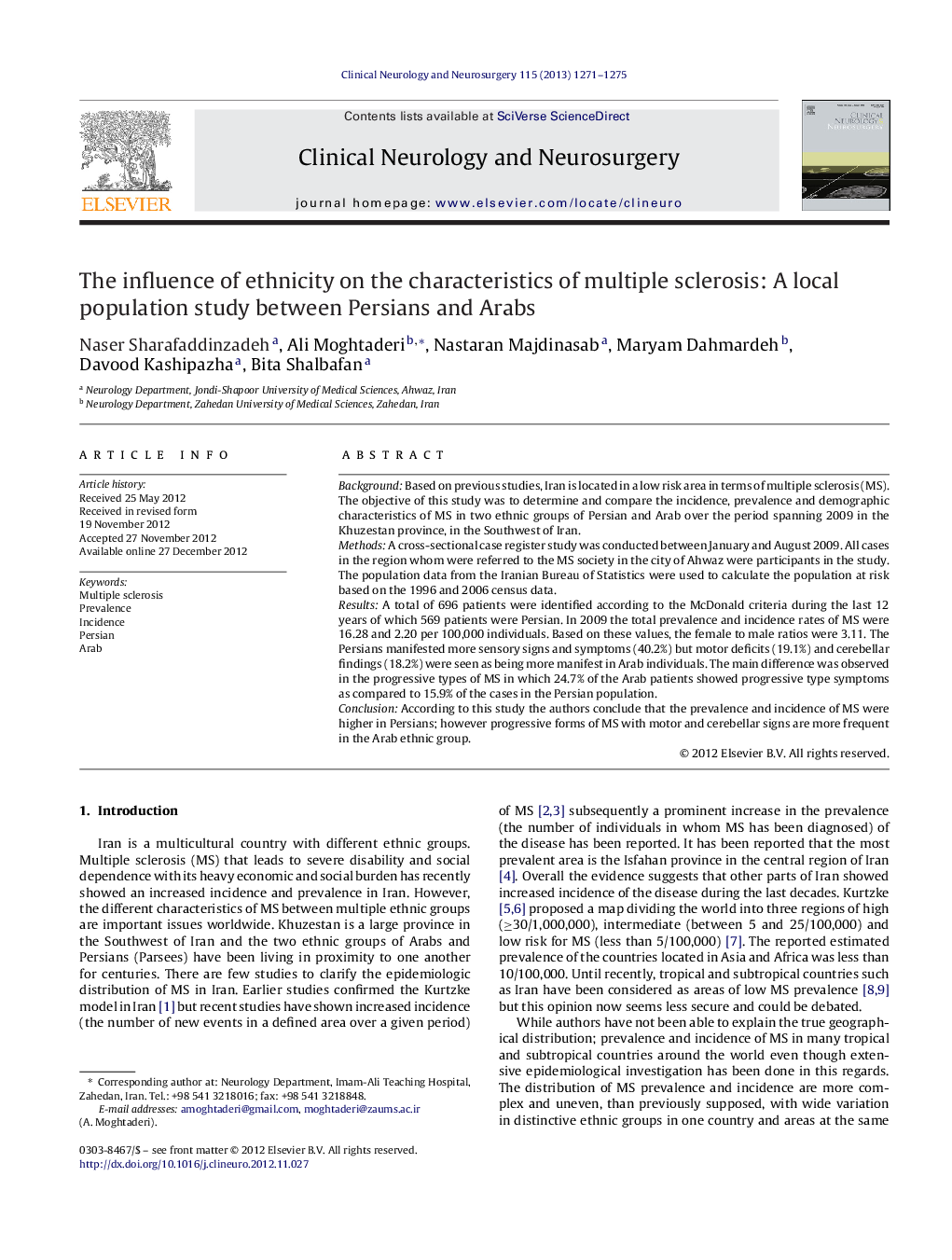| Article ID | Journal | Published Year | Pages | File Type |
|---|---|---|---|---|
| 6006861 | Clinical Neurology and Neurosurgery | 2013 | 5 Pages |
BackgroundBased on previous studies, Iran is located in a low risk area in terms of multiple sclerosis (MS). The objective of this study was to determine and compare the incidence, prevalence and demographic characteristics of MS in two ethnic groups of Persian and Arab over the period spanning 2009 in the Khuzestan province, in the Southwest of Iran.MethodsA cross-sectional case register study was conducted between January and August 2009. All cases in the region whom were referred to the MS society in the city of Ahwaz were participants in the study. The population data from the Iranian Bureau of Statistics were used to calculate the population at risk based on the 1996 and 2006 census data.ResultsA total of 696 patients were identified according to the McDonald criteria during the last 12 years of which 569 patients were Persian. In 2009 the total prevalence and incidence rates of MS were 16.28 and 2.20 per 100,000 individuals. Based on these values, the female to male ratios were 3.11. The Persians manifested more sensory signs and symptoms (40.2%) but motor deficits (19.1%) and cerebellar findings (18.2%) were seen as being more manifest in Arab individuals. The main difference was observed in the progressive types of MS in which 24.7% of the Arab patients showed progressive type symptoms as compared to 15.9% of the cases in the Persian population.ConclusionAccording to this study the authors conclude that the prevalence and incidence of MS were higher in Persians; however progressive forms of MS with motor and cerebellar signs are more frequent in the Arab ethnic group.
